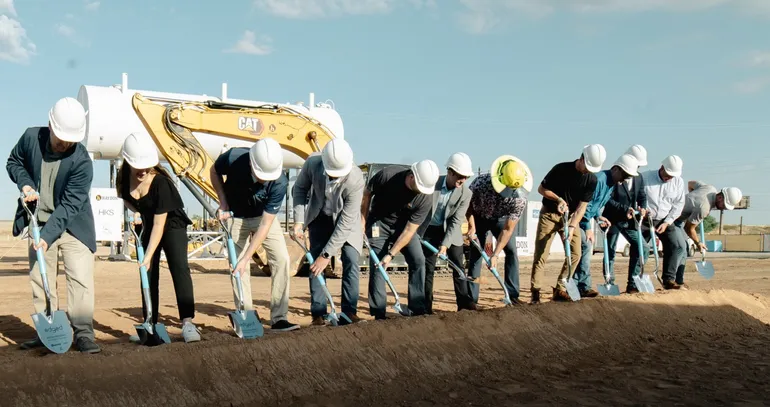Mesa, Arizona, is fast becoming a key hub for data centers as shovels continue to hit dirt in the city to meet surging demand for AI-capable computing facilities.
Phoenix-based Haydon recently broke ground in August on a data center facility for Edged Energy, a New York-based company that builds and operates data centers. Construction costs will reach about $70 million, said Justin Newman, partner and senior vice president of the building division at Haydon.
But the concentration of data centers under construction in Mesa is putting some pressure on general contractors in the region, as they battle against each other for limited labor and materials. Mesa officials said about 14.8 million square feet of data center space is planned or under construction in the city, according to the Phoenix Business Journal.
For example, services, like inspections, now require more lead time than they used to, said Newman. He added same-day inspections are no longer a guarantee, which makes thorough scheduling and coordination essential for keeping projects on track.
“With the rapid pace of development in Mesa, it’s crucial for us as the general contractor to anticipate and plan for the growing demand on city resources,” said Newman. “This level of foresight is key to delivering a successful project, and it’s something we’ve refined through our extensive experience in Mesa.”
The project, located on a 12-acre site near the Phoenix-Mesa Gateway Airport, will feature a 210,000-square-foot campus. The data center facility will support high-density artificial intelligence and digital data processing, according to Edged Energy.
Haydon expects to complete the project by late 2025.
“This project is incredibly exciting for us at Haydon,” said Newman. “We’re at the forefront of blending cutting-edge innovation with sustainable practices.”
One of the key features of the facility will be its advanced water cooling technology. The technology, called ThermalWorks, will save more than 94 million gallons of water each year, a critical benefit especially in a dry climate like Arizona, according to Edged.
“By partnering with Edged to prioritize energy efficiency and water conservation, we’re not only addressing environmental concerns but also supporting the rapid, dynamic growth of the Valley’s tech ecosystem,” said Newman. “It’s a unique opportunity to push the boundaries of what’s possible in construction, ensuring that our work today contributes to a more sustainable and technologically advanced future for the region.”
Growing hub in the Grand Canyon State
The project marks yet another significant addition to Mesa’s rapidly expanding data center footprint.
For example, Meta, the parent company of Facebook, selected DPR to build a $1 billion data center over 2.5 million square feet. DPR expects to complete the facility in 2026.
Meanwhile, Google also shared plans to build a $600 million data center facility in the city. The project will help power its popular digital services for people and organizations worldwide, namely Google Search, Gmail, Google Cloud and others, according to the tech giant.
EdgeCore Digital Infrastructure, a Broomfield, Colorado-based data center developer, owner and operator, also selected Atlanta-based Holder Construction to build a $1.9 billion data center campus in Mesa earlier this year. Other projects nearby include two semiconductor fabs worth $20 billion in Chandler, Arizona.
Data center owners, operators and developers have focused on Mesa for the region’s few natural disaster risks, low utility costs and an overall business-friendly environment.
“From the design review board to permitting and now into the construction phase, Mesa’s proactive support has been invaluable,” said Newman. “Over the years, we’ve had the privilege of working on multiple projects with the city of Mesa, which has allowed us to build a strong rapport with their staff and gain a deep understanding of how to navigate the city’s processes effectively.”

